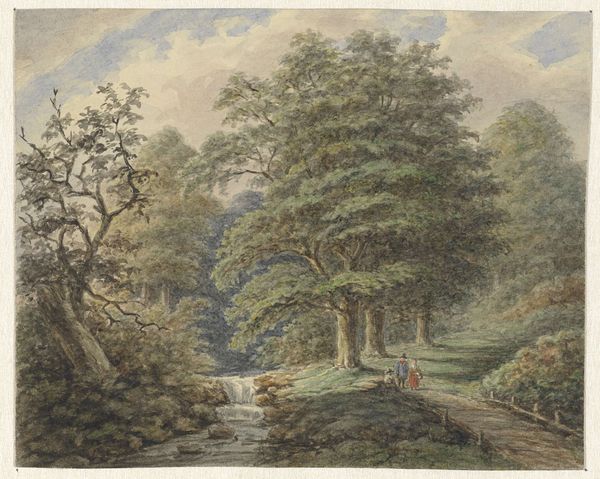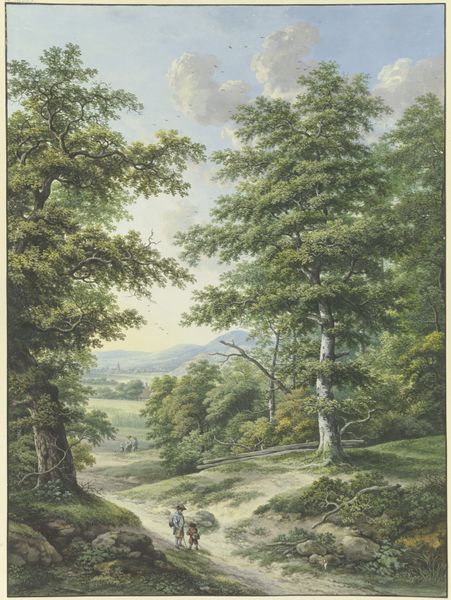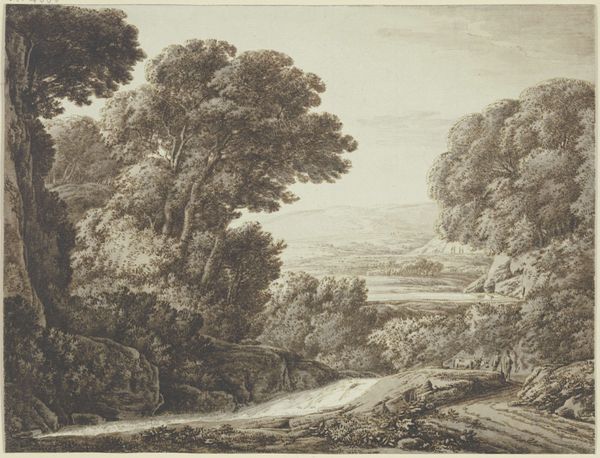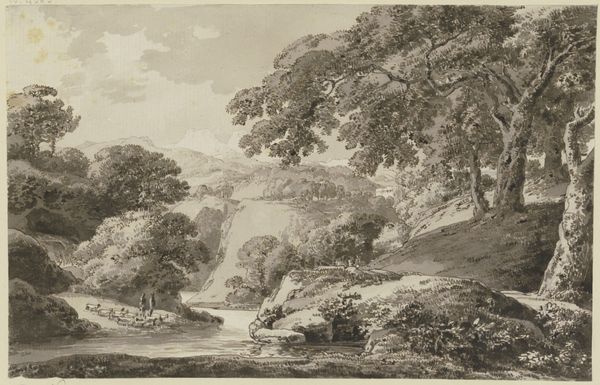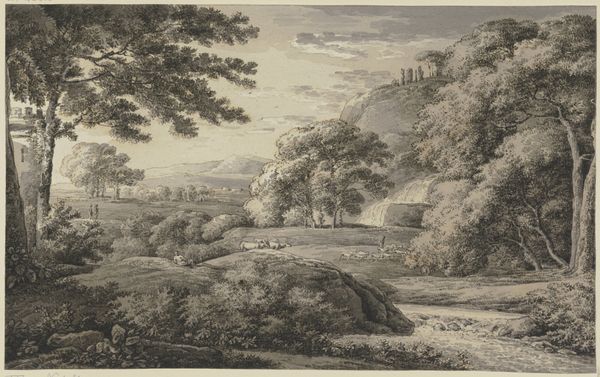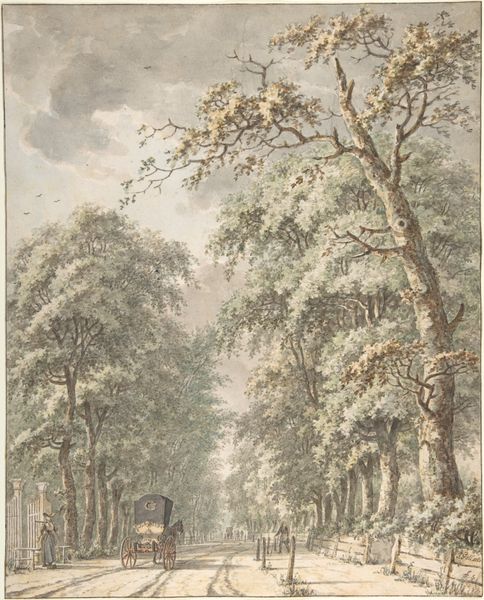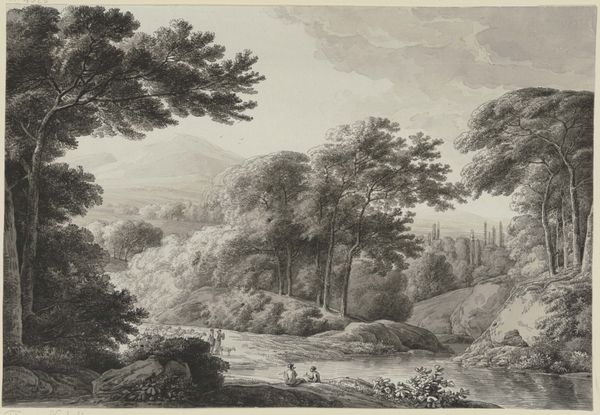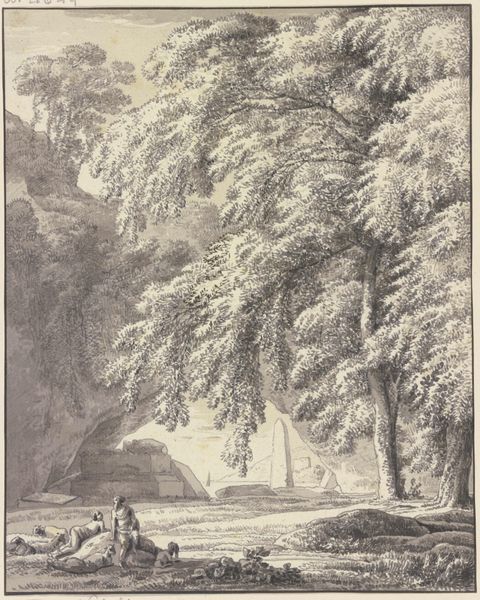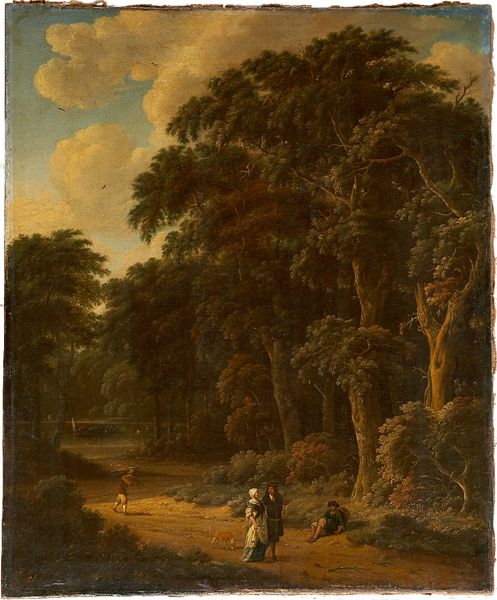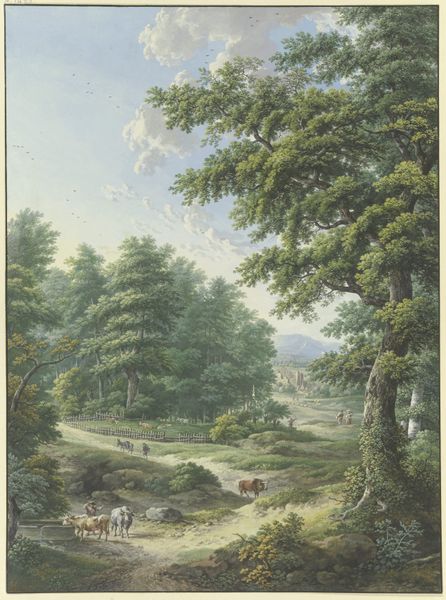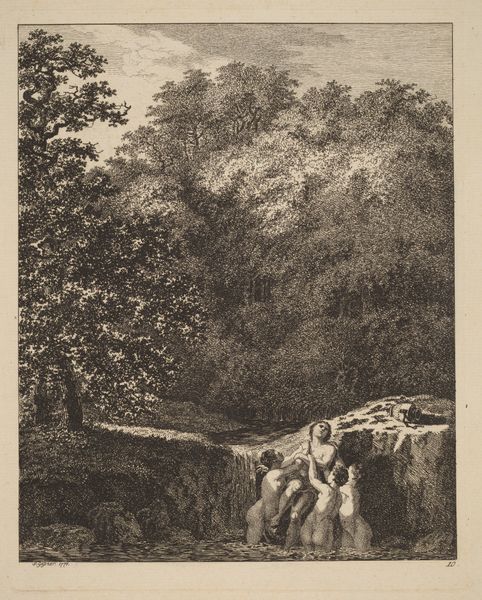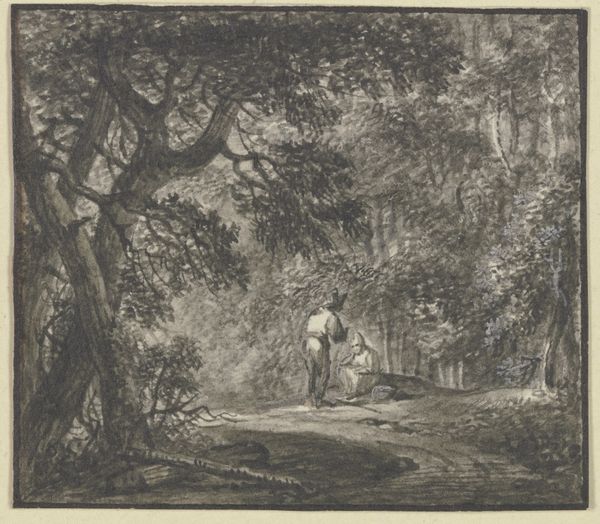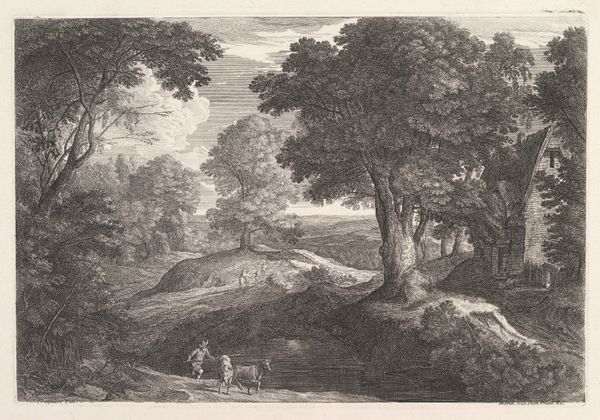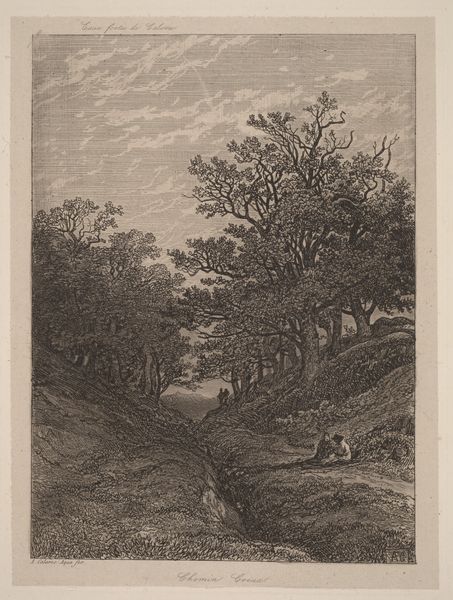
Family Gathered Before a Monument in a Landscape with a Waterfall 1805
0:00
0:00
drawing, print, sculpture
#
drawing
# print
#
sculpture
#
landscape
#
waterfall
#
charcoal drawing
#
charcoal art
#
sculpture
#
romanticism
#
history-painting
#
watercolor
Dimensions: sheet: 15 13/16 x 20 9/16 in. (40.1 x 52.2 cm)
Copyright: Public Domain
Curator: Johann Heinrich Meyer's work from 1805, titled "Family Gathered Before a Monument in a Landscape with a Waterfall," offers a serene window into early 19th-century Romanticism, doesn't it? Editor: Absolutely! My first thought seeing this is… tranquility with a hint of wistfulness. The muted tones give it an almost dreamlike quality, like a cherished memory fading slightly at the edges. Curator: Meyer situates this seemingly idyllic family scene within a complex nexus of power, class, and aesthetic ideology. Consider the "monument" of the title—its symbolic implications can be dissected through a post-structuralist lens, specifically regarding its inherent ties to systems of social control. Editor: Whoa, that’s a mouthful. I was just thinking, wouldn't it be lovely to picnic by that waterfall? Seriously though, the way he’s captured the light filtering through the trees...it’s so inviting! It's romantic but it feels controlled somehow, maybe even a little melancholy? The waterfall in the distance makes the main scene feel still and the figures blend right in. Curator: Exactly. And, drawing upon feminist art historical discourse, we might examine the portrayal of women in this piece. The family unit, positioned submissively before both the monument and the vast landscape, implicitly reinforces dominant patriarchal structures. It's all so neat, tidy. The aesthetic order has an impact. Editor: Huh. I definitely wasn't picking up on *that*! But now I see the contrast you're drawing between nature’s grandeur and the monument in terms of hierarchy, which is subtle. All I had in mind initially was how art gives you something new to look forward to each time. It doesn’t scream oppression. It just reminds me how every era saw things its own way. What the hell will they say about us? Curator: Precisely. And the strategic placement of the figures is hardly an accidental one within the larger aesthetic and ideological project that constitutes Romanticism. Editor: So, to summarise – underneath its dreamy appearance there's actually all this stuff that asks about how people are behaving with each other and the land surrounding them. Who knew! Curator: Indeed, and that nuanced relationship continues to spark critical debate. Editor: Makes you wonder what other stories lie just beneath the surface. I feel inspired now.
Comments
No comments
Be the first to comment and join the conversation on the ultimate creative platform.
